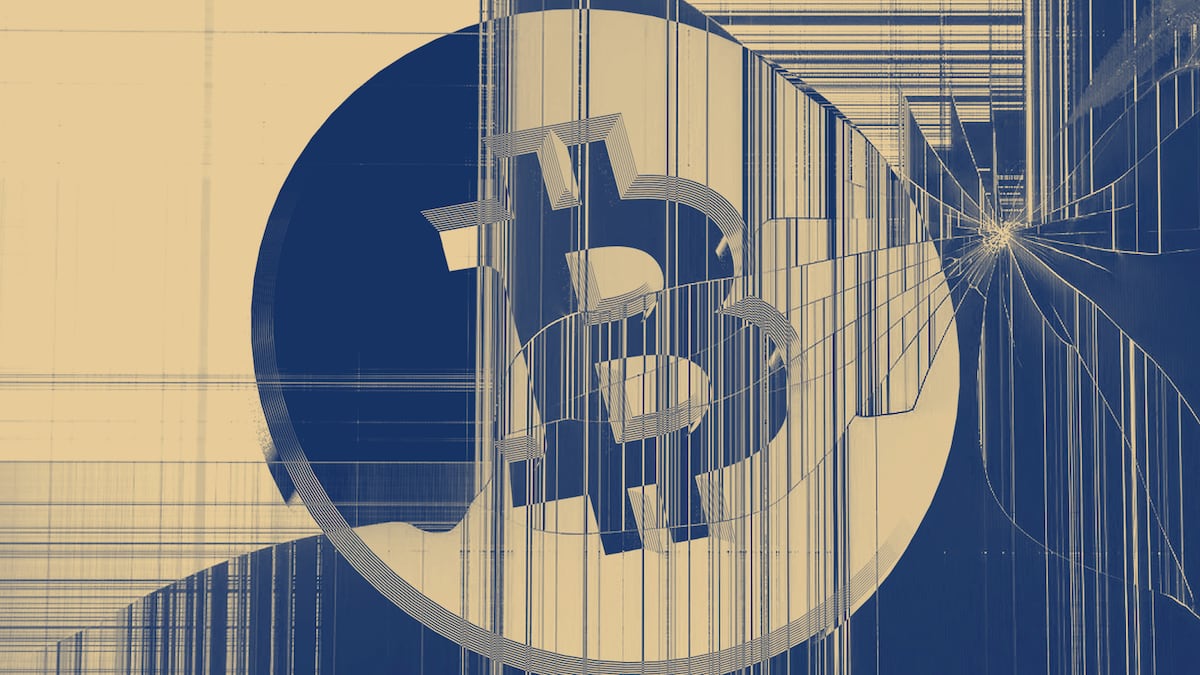- Market infrastructure expert Niki Beattie talks to DL News about why speed-trading firms have seized on cryptocurrency markets
- Jump Trading, Jane Street and Tower Research are among secretive high-frequency traders that make money in crypto
- Crypto is a volatile asset class where investors are relatively ‘uninformed’ — perfect conditions for trading
Crypto is just another asset to Goliath trading firms including Jump Trading, Jane Street, and Tower Research — albeit a slightly more volatile one.
That’s according to Niki Beattie, the founder of London-based capital markets consulting firm Market Structure Partners and chair of ClearToken, a digital assets clearing house.
In an interview with DL News, Beattie explained why these firms have piled into crypto, why crypto traders are “uninformed,” and why Europe has an advantage over Singapore and Dubai when it comes to crypto trading.
NOW READ: Secretive trading firms that pile into crypto are ‘first sign’ of mainstream adoption
She declined to discuss specific firms, and noted that different companies have different strategies. Her comments have been edited for clarity.

DL News: Why are high-frequency trading, or HFT, firms so secretive?
Niki Beattie: Every HFT — they’ll be collecting their own data and analysing it and developing their own strategies based on the back of it. If other people know what their strategies are, then basically they can trade against them in the market. So they’re very secretive for those reasons.
Once your strategy is blown, then it’s no longer a profitable strategy anymore. You’ve got to go back to the drawing board and create new ones.
They’re constantly investing in new trading strategies because actually, you develop a trading strategy and then the success of it erodes over time, generally.
‘It’s just a volatile asset with a lot of uninformed people trading, and that’s a very attractive place to make money
They are opaque by design in every asset class, not just in crypto. It’s because they don’t want to give away any of their strategies to their competitors.
So some of them, the whole organisation will be working together on the same strategies. And some of them, the inter-dealer brokers in the fixed-income market, just employ multiple desks to all compete against each other, and there’s nobody pulling together in the whole organisation.
So it’s really hard to generalise about what they are like inside and exactly what the strategies are that they’re deploying. They don’t want their competitors to know what they’re doing.
That’s really the key thing, because it’s very, it’s very lucrative. Why would you want your competitors to know when you can make so much money out of all of this?
DL News: Is there something special about crypto markets for these firms?
NB: No. It’s just a volatile asset with a lot of uninformed people trading, and that’s a very attractive place to make money. If you have lots more data than other people, and you can see all the mistakes they’re making, or where they’ve not got enough information.
The most lucrative time for them is when an asset is volatile. And clearly we’ve seen massive volatility in those markets. To be in HFT requires a significant balance sheet, a lot of capital.
That means that you’ve got enough to invest in — buying all the data, storing all the data, being able to analyse it until you’ve got the capital to then trade in those markets. So they’re in a much more advantageous position, than a return investor.
Nobody’s really got access to the reality behind crypto at the moment. So it’s just numbers for the HFTs — it doesn’t really matter what it is, could be aeroplane leases, if they were being traded and very volatile, and people didn’t have much information about them.
DL News: And when you say uninformed traders, is that a synonym for retail in general? Or is there something else?
NB: Who really knows what’s going on in the crypto market? In that market, apart from somebody who’s got an awful lot of data to analyse, no one really knows what’s going on.
It’s not like there’s any kind of stock where you’re looking at the fundamentals of the company and you’re thinking about the valuation of it. It’s not not got anything really for people to examine.
It’s at a very nascent stage. Most people trading in the market are completely uninformed.
On institutionalisation of crypto markets
NB: We’re at this stage where we’ve got this bridge now between retail markets. And institutional markets and really the HFTs are the first sign that we’re moving in that direction.
There’s been a lot of sensationalism about how much money people have made, but generally, it’s been a lot of big players, particularly retail.
And now we’ve got the first sign that we’re going to institutionalise this market is coming along with the liquidity providers saying, “Okay, we’ll put some money in.” It’s sort of experimental money at the moment.
And it is insignificant compared to the money that is going into making markets and equity and bond markets.Initially, it was attractive to them because it was just so volatile. This is pre crypto winter. Then you could say, well, why haven’t they just withdrawn and gone off elsewhere?
NOW READ: BlackRock’s tokenisation push is just the start — private asset boom may hit $290tn
The answer is that many people now, including these market makers, but also firms like BlackRock’s tokenisation push is just the start — private asset boom may hit $290tn, etc, acknowledge that digital assets are the way forward.
‘The US is a complete mess’
People are starting to say, ‘Okay, how do we bridge this world between traditional finance and decentralised finance to create a world where institutions can start to play in crypto?’
And once they can play in crypto, we sort of unlock all other digital assets. It could be in aeroplane leases, it could be in artwork, everything then becomes a tradable asset.
Everybody’s just starting to realise that blockchain, although incredibly useful technology, is not going to solve the problem alone.
And this is where you need to start building infrastructure that sort of represents what we know today, like clearinghouses and exchanges and all those sorts of things.
That’s where the world is going. It’s sort of like, “Okay, let’s take this seriously. And let’s start to develop an entire market structure that works. Not just for retail, but actually in an institutional environment.”
So people can see that there’s a future in all of this.
And when you say liquidity providers, what’s a liquidity provider versus an HFT?
NB: You should see them as the same thing. Some HFTs would say that they genuinely are more about providing liquidity to the market and their strategies would be looking at the fair value of a stock, for example, and basically sort of constantly correcting that.
Whereas other people might be in latency arbitrage but overall, they would all see themselves — or they certainly would all declare themselves — as a liquidity provider, i.e. their very presence in the market is creating liquidity and turnover.
NOW READ: DeFi ‘threat’ drives $1.5B tokenisation boom as Goldman, SocGen eye on-chain bonds
Bitcoin is traded globally. So, the latency arbitrage is — the opportunities are significant. But if you go into other asset classes, latency arbitrage it’s becoming less of a strategy because people are trying to remove that latency.
They have a spectrum of different strategies, some of which might be more well intended in liquidity provision and others, like latency arbitrage, is probably more questionable.
On the US vs the UK and other crypto hubs
NB: The US is a complete mess. The US is not going to be a leader on this. MiCA actually is pretty good, it doesn’t solve the whole market structure — it doesn’t define exchanges and clearinghouses and things like that, but it’s starting to define the assets and how they might be sort of described, etc.
NOW READ: Europe’s MiCA offers crypto utopia for Americans in a banking crisis. But it’s not that simple
The EU is really progressive and the UK also has an opportunity, because they’re rethinking all of this and clearly it’s a moment for the UK to say, “Do we want to put ourselves at the centre of this while the US has got their eye off the ball?”
And if they want to regain a little bit of credibility in financial markets, then this might be a way for them to do it. I definitely think right now Europe is the most interesting place and, for institutional flows, it’s got the largest amount of liquidity.
If you look at places like Singapore, Dubai, they don’t have those flows, and so they have less of a need, maybe, to fix some of those things. But they don’t have the knowledge, I don’t think, either.
